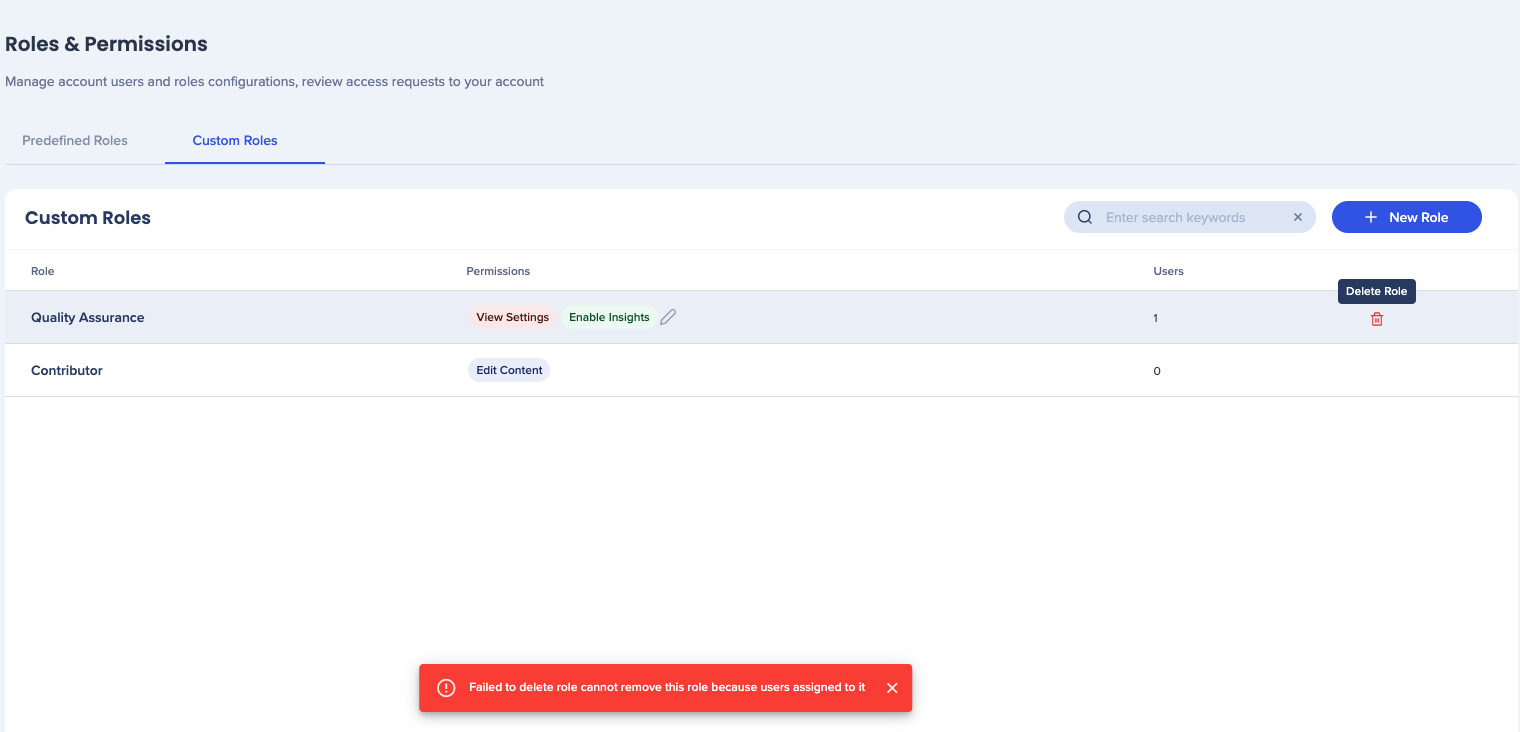Welcome to the
WalkMe Help Center
Please log in to continue

Please log in to continue

The Roles and Permissions page in the Admin Center presents clear and intuitive user management architecture including a new roles hierarchy that shows detailed role permissions and eliminates the need for custom roles
Access it from admin.walkme.com.


A user's role defines their permissions and limitations. In the Roles & Permissions tab you will see all of the Roles listed with the corresponding number of assigned users. You can choose from Predefined and Custom Roles.
The predefined roles WalkMe supports are:
Admin: Have complete control over the account, including settings and user management
Content Manager: Create and modify WalkMe content and settings, publish to all environments
Builder: Have full access, except for publishing and User Management
Publisher: View WalkMe content and settings, publish to all environments
Content Creator: Edit WalkMe content and view settings - No access to publishing
(use case: technical writer)
Content Viewer: View WalkMe content and settings - Includes access to Insights.
(use case: reviewer)
Analyst: View WalkMe content and settings, have complete access to Insights (use case: Insights reviewer)
Translator: Create and modify Text & Multi-Language content - No access to the Editor
System Manager: Manage systems assigned to you and associated users - No access to security and API keys. Cannot create new users on the account, can only assign existing users and only to the systems they are managing.
Each role specifies the user's access to the following features:
You can create a custom role when you want to have very specific permissions for the role that are not included in one of the predefined roles.
The following role permissions are supported:
None: No permission to all Admin Center capabilities
View Only: Can view users only
No ability to create new users, modify existing users, or assign users to systems.
Limited Access:
Edit:
Create new users
Modify existing users
Assign users to systems
Have access to Users page in the Communication Center
Limited Access:
Can view only systems they are assigned to
Can modify only the systems they are assigned to
Can access the activity log, only to the systems they are assigned to
Can't create new systems
Can delete and restore only assigned systems
None: No access to Communication Center. User can't see the Communication Center app in the side menu.
Edit: Access to 'My Notifications'. Users can create and edit their own notifications.
None: User can't see the 'All Notifications' option, only 'My Notifications'
View: User can switch to 'All Notifications' but can only view the notifications and cannot perform the following actions:
Edit
Duplicate
Delete forever
Rename notifications that were not created by that user
Edit: User can perform all edit actions in 'All Notifications'
None: User can't see the Audiences page under the Communication Center side menu and view audiences in the notification Delivery page
View: User can access the Audiences page, but can't perform the following actions:
Edit audience
Duplicate Archive
Create new audience
Activate archived audience
Delete forever
Edit: User can access the Audiences page and perform all Audiences related actions
None: The following actions are not available:
Send now
Schedule
Archive
Pause
Restore
Mark as done
Allowed: User can perform all publishing actions
None
View
Edit

